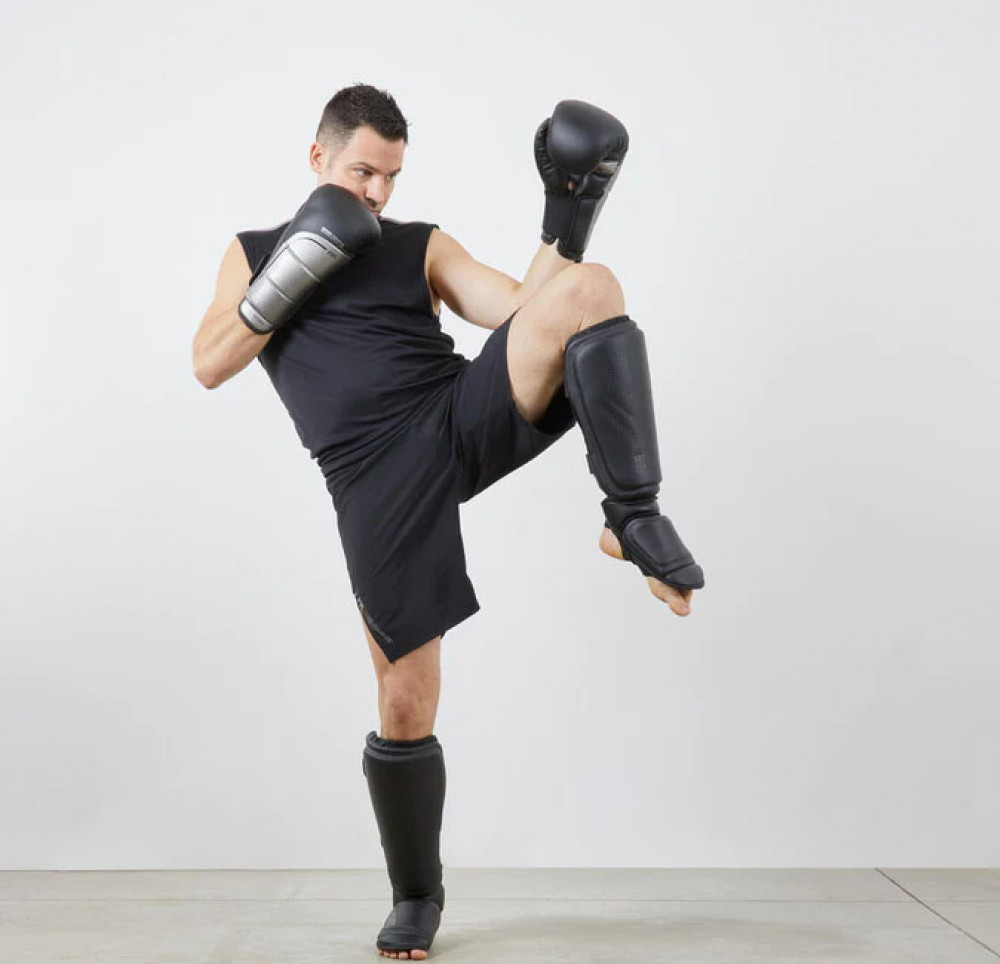
Kickboxing Let's Learn Hook for kids
2024-02-12 - kick-boxingKickboxing is not just about throwing punches randomly; it
requires precision, technique, and strategy. Among the various striking
techniques, the hook stands out as a powerful and versatile punch capable of
inflicting significant damage on opponents. In this article, we'll delve into
the intricacies of executing a hook in kickboxing, from understanding its
mechanics to mastering its application in combat.
Understanding the Mechanics of a Hook
To throw an effective hook, one must first grasp the
fundamental mechanics involved. Proper stance and positioning are paramount to
ensure stability and balance while delivering the punch. Whether executing a
lead hook or a rear hook, the rotation of the hips and torso is essential for
generating power. By pivoting on the lead foot for a lead hook or the rear foot
for a rear hook, the fighter can maximize the force behind the punch.
Different Types of Hook Punches
In kickboxing, there are primarily two types of hook
punches: the lead hook and the rear hook. The lead hook is thrown with the lead
hand, while the rear hook is executed with the rear hand. Each has its unique
applications and can be utilized in various combinations to keep opponents
guessing and maintain offensive pressure.
Step-by-Step Guide to Throwing a Hook
Executing a hook punch requires precise coordination and
technique. Begin by assuming a proper stance with your feet shoulder-width
apart and knees slightly bent. As you prepare to throw the hook, rotate your
hips and torso in the direction of the punch, keeping your elbow bent at a
90-degree angle. Drive the punch forward with explosive force, aiming to make
contact with the side of your opponent's head or body. Follow through with your
motion, returning to your guard position to protect yourself from
counterattacks.
Common Mistakes to Avoid
While the hook is a potent weapon, certain mistakes can
diminish its effectiveness and leave you vulnerable to counterattacks. Avoid
telegraphing your intent by maintaining fluid and deceptive movement.
Additionally, be cautious not to overcommit to the punch, as this can
compromise your balance and leave you exposed. Finally, remember to keep the
opposite hand up to defend against incoming strikes and maintain a solid guard.
Drills and Exercises to Improve Hook Technique
Like any skill in kickboxing, mastering the hook requires
dedicated practice and repetition. Incorporate shadowboxing drills into your
training routine to focus on technique and timing. Utilize heavy bag drills to
develop power and accuracy, aiming for specific targets with each hook. Partner
drills can also be beneficial for simulating realistic combat scenarios and
refining your defensive skills.
Incorporating Hooks into Your Training Routine
To effectively integrate hooks into your arsenal,
incorporate them into your pad work and sparring sessions. Experiment with
different combinations and angles to keep your opponents guessing and create
openings for further attacks. By consistently practicing hooks in various contexts,
you can increase your proficiency and confidence in utilizing them during live
combat situations.
Advanced Tips for Mastering Hooks
For more experienced fighters looking to take their hook
game to the next level, focus on refining your footwork and angles of attack.
Use feints and setups to disguise your intentions and create openings for
hooks. By mastering the art of deception and timing, you can catch opponents
off guard and land devastating blows with precision.
Importance of Defense After Throwing a Hook
After executing a hook, it's crucial to immediately return
to a defensive stance to protect yourself from potential counterattacks.
Maintain awareness of your surroundings and be prepared to evade or block
incoming strikes. Remember, a well-timed counter can quickly turn the tide of a
fight, so prioritize defense alongside offense.
Enhancing Speed and Accuracy
Speed and accuracy are essential components of effective
hook punches. Incorporate speed drills and focus mitt work into your training
regimen to improve your reaction time and target acquisition. By consistently
challenging yourself to increase your speed and accuracy, you can deliver hooks
with precision and efficiency, maximizing their impact on your opponents.
Common Injuries and How to Prevent Them
As with any striking technique, there is a risk of injury
when throwing hooks. Common injuries include wrist sprains, hand fractures, and
shoulder strains. To minimize the risk of injury, ensure that your fists are
properly wrapped and wear supportive gloves during training and competition.
Additionally, focus on strengthening the muscles surrounding your wrists and
shoulders through targeted exercises and stretches.
Mental Preparation for Executing Hooks
Beyond physical technique, mental preparation plays a
crucial role in executing hooks effectively. Visualize yourself successfully
landing the punch with speed and accuracy, instilling confidence in your
abilities. Maintain focus and composure during training and competition,
trusting in your preparation and technique to carry you through challenging
situations.
Benefits of Including Hooks in Your Arsenal
Incorporating hooks into your kickboxing repertoire offers
numerous benefits both in and out of the ring. Hooks are versatile strikes that
can be used at various ranges, allowing you to adapt to different opponents and
situations. Additionally, they serve as effective setups for other strikes,
enabling you to string together combinations and maintain offensive pressure.
Practical Applications in Sparring and Competitions
In sparring and competitive matches, the ability to
effectively utilize hooks can make the difference between victory and defeat.
By mastering the mechanics and execution of hooks, you can keep opponents on
the defensive, create openings for further attacks, and score points with
precision strikes. Remember to remain patient and strategic in your approach,
capitalizing on opportunities as they arise.
Conclusion
Mastering the hook punch is a rewarding journey that
requires dedication, practice, and attention to detail. By understanding the
mechanics, avoiding common mistakes, and incorporating hooks into your training
routine, you can enhance your striking arsenal and become a more formidable
kickboxer. So, let's lace up our gloves, hit the gym, and start throwing some
knockout hooks!







.jpg)











































































































































































































